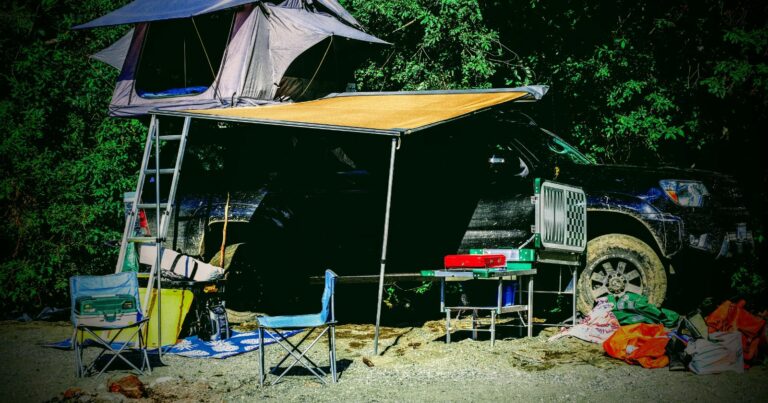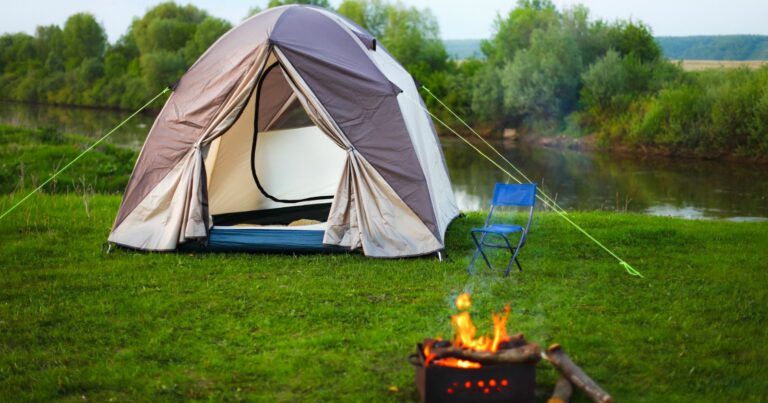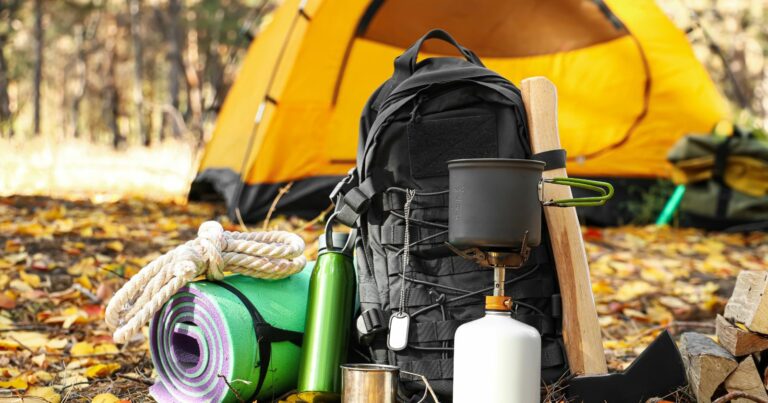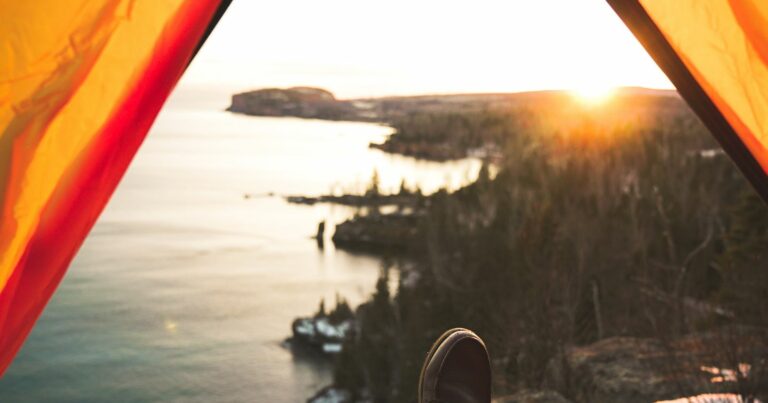How to Set Up Camp in the Forest
The fresh mountain air, the sound of birds chirping, the rushing of a nearby stream – escaping to the forest for camping is a revitalizing experience. As idyllic as it sounds, camping does require some preparation and know-how to do it right. Setting up a proper campsite is key to ensuring your outdoor overnight adventure is fun, safe, and environmentally friendly.
In this post, I’ll walk through the step-by-step process for how to set up camp in the forest. You’ll learn tips for picking the optimal tent location, assembling your shelter, building a campfire, storing food safely, and minimizing your impact on the land. With the right approach, your camp will be a cozy home-away-from-home amid the natural splendor of the woods.
Whether you’re a total beginner or a seasoned pro, read on to pick up some new techniques for seamlessly setting up camp on your next forest getaway. The sounds of the babbling brook and smell of pine trees await! By the end, you’ll be ready to stake down your tent and roast marshmallows in no time.
Choose the Right Location
Choosing where to pitch your tent is one of the most important decisions when camping in the forest. Here are some tips:
- Find a flat, clear area without major slopes or inclines. This will provide the most stable, level surface for your tent.
- Look for a site that’s protected by natural windbreaks like hills or boulders. This blocks gusts and provides shelter.
- Avoid setting up under large dead trees or hanging branches. These present a falling hazard in storms.
- Make sure the spot isn’t in a low-lying area or gully that could flood during rain.
- Pick a location at least 200 feet from lakes, rivers, and streams to avoid contamination.
Taking the time to find the optimal tent spot will ensure you have a peaceful night of sleep.
Lay Down a Tarp or Footprint
Before setting up your tent, lay down a tarp or tent footprint. This serves several purposes:
- Creates a moisture barrier between the tent floor and ground.
- Helps keep tent bottom clean from dirt and debris.
- Provides an extra layer of protection from small sticks or rocks.
- Allows tent to be easily moved if you later need to switch sites.
Ideally, the footprint will be made of the same waterproof, durable material as your tent base. Extra tarps also work well. Lay it out completely flat before placing your tent.
Assemble Your Tent Properly
Setting up a tent may sound straightforward, but there are some key tips to get it right:
- Clear the area of any sticks, rocks, pinecones that could damage the floor.
- Unroll and unfold the tent, then loosely stake down the four corners before inserting poles.
- When inserting poles, start with the middle ridge pole before doing the end poles. This provides needed structure.
- Ensure the tent fabric isn’t getting caught or pinched by the poles as you assemble them.
- Place the rainfly over the tent only after the body/frame is fully set up. This allows proper alignment.
Following your manufacturer’s instructions precisely is always recommended. And enlist a camping buddy to help!
Build a Campfire Safely
One of the best parts about forest camping is gathering around a cozy campfire. But be sure to follow fire safety:
- Only build fires in designated fire rings or pits. Ask the forest service if unsure.
- Clear away all dry leaves, grass and sticks within a 10 foot perimeter.
- Have a large water source and shovel nearby to extinguish if needed.
- Never leave the fire unattended, and ensure it is completely out before going to bed or leaving camp.
- Consider a small backpacking stove instead of a fire if conditions are dry/windy.
Taking precautions will allow everyone to enjoy the warmth and glow of the campfire safely.
Store Food Properly
Nothing spoils a camping trip faster than having animals ransack your food supplies. Follow these tips to store food securely:
- Keep all food, snacks, toiletries and scented items in airtight, hard-sided coolers or containers, not tents.
- Consider bringing along a bear-proof cooler or canister if bears are active in the area.
- Never keep food inside your tent – the smells can attract critters.
- Hang food bags from tree branches at least 10 feet high and 4 feet from the tree trunk. Or place in bear lockers if provided.
- Remove and securely store any uneaten food rather than leaving out overnight.
Being diligent about food storage will minimize unwanted animal encounters.
Leave No Trace
To preserve the natural beauty and minimize your impact, abide by Leave No Trace principles when breaking down camp:
- Carry out all trash – do not bury or burn waste.
- Dismantle fire rings and scatter debris when leaving sites.
- Use restroom facilities or bury human waste at least 6-8 inches underground, 200 feet from water sources.
- Stick to designated trails and camping areas to avoid damaging plants and wildlife habitats.
- Leave the area cleaner than how you found it by removing all belongings and picking up any litter.
Following Leave No Trace guidelines protects the forests and wilderness areas for future generations to enjoy.
Be Prepared for the Unexpected
From sudden downpours to injured ankles, surprises can and do happen when camping. Be ready for any scenario with these tips:
- Pack a first aid kit, compass, maps, flashlights and whistle for emergency situations and injuries.
- Have backup waterproof tarps, tents, sleeping bags, dry firewood in case of wet weather.
- Research if cell phone signals are available and consider bringing a satellite messenger device.
- Tell someone your exact camping location, route and expected return date.
- Familiarize yourself with evacuation procedures and the closest ranger station.
Planning ahead and having contingency gear can give peace of mind if an unexpected challenge arises.
Camping in the magnificent forests allows us to disconnect from devices and reconnect with nature. By correctly setting up camp and being prepared, you can relax and fully immerse yourself in the wilderness experience. Here’s to creating treasured memories beneath the tall trees!







